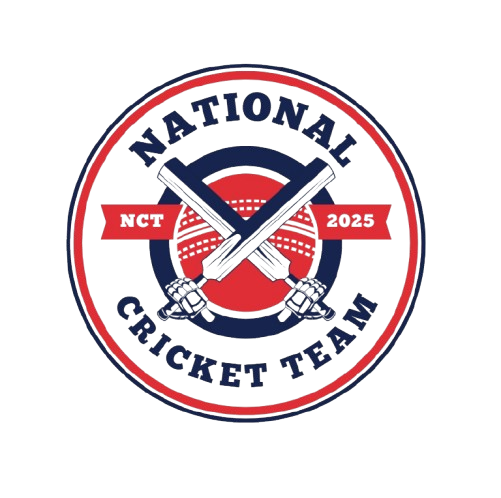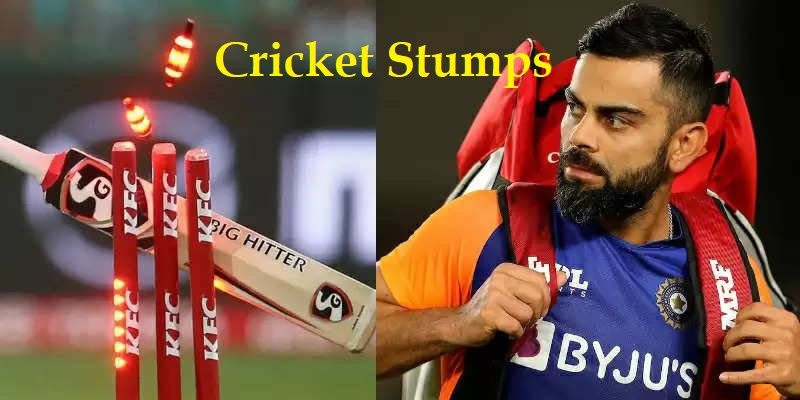Table of Contents
Introduction to Cricket Stumps
When we talk approximately the game of cricket, the first thing that involves mind aside from the bat and ball is the stumps, because they form the very foundation of the wicket. The cricket stumps are three vertical posts that stand within the floor at every end of the pitch and, collectively with the bails, shape the wicket. These stumps aren’t just wooden poles located randomly on the field however are deeply symbolic and carry centuries of cricketing tradition with them. They are the closing goal for bowlers and the remaining protection factor for batsmen.
The significance of cricket stumps is so tremendous that with out them, cricket cannot be played in its preferred form. Whether it is bowled, stumped, or run out, the choice is dependent on the stumps being dislodged. They define the legal guidelines of dismissal and convey the crowd to their feet whenever the ball crashes into them.
History and Evolution of Cricket Stumps
Cricket stumps have a wealthy records that dates returned to the very origins of the sport in 16th-century England. In the earliest shape of cricket, there have been most effective two stumps in preference to 3. The batsman needed to guard the gate-like shape, and bowlers used underarm bowling to hit them. However, the sport changed significantly in 1775, while an English bowler named Edward “Lumpy” Stevens bowled 3 consecutive deliveries thru the two stumps without hitting them. This incident made it clear that there has been a gap, and it become unfair to the bowler. As a end result, the 1/3 stump was brought, developing the contemporary-day wicket that consists of 3 stumps and bails.
The materials used to make stumps also developed over the years. Traditionally, they were fabricated from willow wooden, the identical cloth used for cricket bats. Over the years, ash wood became famous due to its power and durability. Today, stumps are made from superb wood however in limited-overs international cricket, we see the use of LED stumps prepared with sensors and flashing lighting fixtures that make dismissals more seen and thrilling for both fans and umpires.
Structure and Dimensions of Cricket Stumps
The Laws of Cricket, ruled with the aid of the Marylebone Cricket Club (MCC), offer very particular information about the dimensions of the stumps. According to the regulations:
- Height: The stumps ought to be 28 inches (71.1 cm) tall.
- Width: The combined width of the three stumps need to be 9 inches (22.86 cm).
- Shape: Each stump has a cylindrical shape, with a spike at the bottom to stick into the floor.
- Bails: Two small portions of wood called bails take a seat on pinnacle of the stumps, completing the wicket.
The stumps are located equidistantly to ensure that the ball cannot pass via them. The bowler’s goal isn’t simply the stumps but the complete wicket structure, consisting of the bails. If the ball hits the stumps and dislodges the bails, the batsman is declared out.
Types of Cricket Stumps
Cricket stumps may also appearance simple, but there are genuinely different sorts used relying on the layout, situations, and level of cricket being performed.
1. Wooden Stumps
Traditional wood stumps are the most commonplace and are utilized in home cricket, Test suits, and club-stage video games. They are durable, cost-effective, and represent the conventional look of cricket.
2. Spring-Loaded Stumps
In some schooling facilities, spring-loaded stumps are used. These stumps do no longer collapse easily but get better to place after being hit. They are ideal for practice periods, specially for bowlers.
3. LED Stumps
Introduced in present day cricket, LED stumps are the most superior version. They are equipped with micro-sensors and flashing lights that glow right away while the bails are dislodged. They were first seen within the 2013 ICC World Twenty20 and have for the reason that grow to be a fan favourite. Although they’re costly, they upload drama to dismissals and help umpires in making correct selections.
4. Plastic Stumps
For leisure cricket, avenue cricket, and junior practice, plastic stumps are regularly used. They are lightweight, transportable, and secure for children.
Role of Cricket Stumps in Dismissals
Cricket stumps are at the center of most forms of dismissal in the sport. Some of the important styles of dismissals involving stumps are:
- Bowled: When the bowler grants the ball and it hits the stumps, dislodging the bails, the batsman is out bowled.
- Stumped: When the wicketkeeper collects the ball and eliminates the bails even as the batsman is out of the crease.
- Run Out: When a fielder throws the ball onto the stumps even as the batsman is short of his crease attempting a run.
- Hit Wicket: When the batsman by accident hits the stumps with his bat or frame at the same time as gambling a shot.
In these kinds of dismissals, the integrity of the stumps is vital. Without them, the sport loses its shape and the very essence of wicket-taking disappears.
Importance of Stumps in Modern Cricket
The position of stumps is going past just being wood poles on the sector. They are:
- A Symbol of the Game: The photo of the stumps breaking is one of the most iconic visuals in cricket.
- Technology Integration: With LED technology, stumps now play a role in helping umpires with correct selections.
- Spectacle for Fans: The flashing stumps add a visual thrill to the game, particularly in fast-paced codecs like T20.
- Training Equipment: Stumps are used in practice drills, bowling accuracy sports, and wicketkeeping education.
Innovations in Stumps Technology
One of the maximum talked-approximately innovations in cricket has been the introduction of LED stumps and bails. These are geared up with touchy sensors that locate even the slightest dislodgement. The lighting fixtures flash in milliseconds, making sure that even close run-out or stumping choices may be judged appropriately. However, the price of LED stumps is extremely high, with a unmarried set costing round $40,000 (₹30 lakh approx). This is why they’re ordinarily utilized in global cricket and principal tournaments.
In the destiny, we’d see smart stumps which can measure ball impact, pace, and attitude, giving even deeper analytical insights into the game.
Famous Moments Involving Stumps
Over the years, some of the most unforgettable cricketing moments have revolved around stumps. Whether it’s miles Shane Warne’s Ball of the Century in 1993, which clipped the stumps and bowled Mike Gatting, or the dramatic run-outs in World Cup finals, the stumps have been on the coronary heart of cricketing drama. The visible of the stumps flying in the air is one that fans cherish and bear in mind for many years.
Comparison Table of Different Types of Stumps
Type of StumpsMaterialUsageSpecial FeatureWooden StumpsWillow/AshTest & Domestic CricketClassic and durableLED StumpsWood + SensorsInternational T20 & ODIsFlashing lighting fixtures for dismissalsPlastic StumpsPlasticStreet & Junior CricketLightweight and safeSpring-Loaded StumpsWood + SpringTraining NetsReturn to place routinely
Conclusion
The cricket stumps may also appear like a simple part of the sport, but their significance is massive. They maintain historical cost, define the policies of dismissal, and offer an iconic picture for the sport. From the times of two stumps within the 1700s to the generation of high-tech LED stumps, their journey reflects the increase of cricket itself. For bowlers, hitting the stumps is the closing prize, at the same time as for batsmen, protecting them is their pinnacle priority. Without stumps, cricket would lose its identity.



